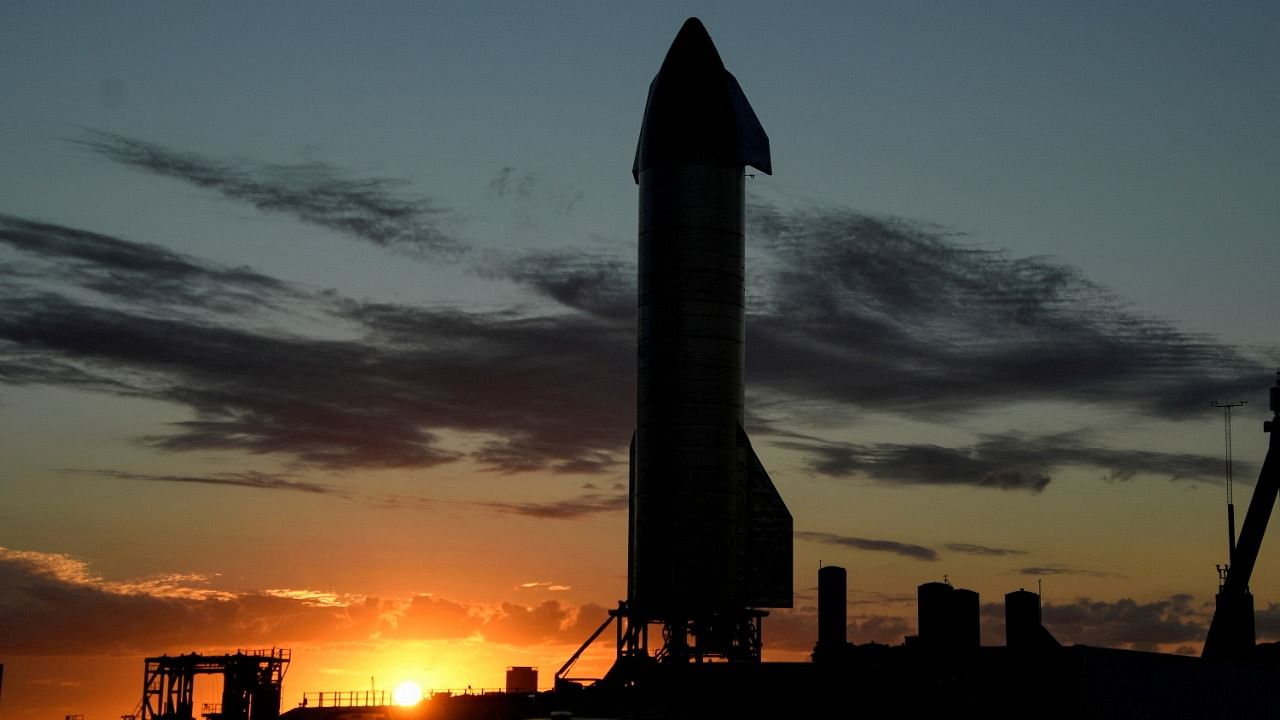
SpaceX can launch a giant new rocket to orbit from South Texas, the Federal Aviation Administration said Monday.
An environmental review by the agency has concluded that SpaceX’s plans for orbital launches will have “no significant impact” on the region along the Gulf Coast near Brownsville. But the FAA is also requiring the company to undertake more than 75 actions to minimize the impact on the surrounding areas as it begins flights of Starship, a vehicle that is central to NASA’s plans to return to the moon as well as the vision of SpaceX founder and CEO Elon Musk to colonize Mars.
The actions Musk’s company must take include earlier notice of launches, monitoring of vegetation and wildlife by a biologist, coordination with state and federal agencies to remove launch debris from sensitive habitats, and adjustment of lighting to lessen the impact on wildlife and a nearby beach.
The mitigation measures required by the FAA also restrict closures of a highway that passes the SpaceX site during launches so that people can visit the nearby beach, park and wildlife refuge. The agency said the highway could not be closed on 18 holidays and not on more than five weekends a year.
The decision means that a more comprehensive environmental review, which could have added months or years to the project, is not needed. However, the regulatory move could face other legal challenges, and SpaceX still needs to obtain a license from the FAA for launches.
SpaceX’s site is in a tiny village called Boca Chica, which the company has taken to calling Starbase.
There, for several years, SpaceX has been working on Starship, a stainless-steel behemoth that would be the most powerful rocket ever. Together with a booster stage, it will stand nearly 400 feet high, taller than the Statue of Liberty and its pedestal.
It will also, unlike any previous orbital rocket, be entirely reusable. That has the potential for greatly cutting the cost of sending payloads to orbit — less than $10 million to take 100 tons to space, Musk has said.
The Boca Chica site offers several factors that make it a favourable place to launch rockets to orbit. Except for the bottom of the Florida Peninsula, it is as far south as one can get on the contiguous United States. For many missions, a launchpad closer to the equator aids the trip to orbit by adding the speed of Earth’s rotation to the rocket’s velocity.
The launch path passes over water, away from populated areas, minimizing the risk to people on the ground.
But other creatures live in the surrounding wetlands, including ocelots and Kemp’s ridley sea turtles, both of which are endangered. State Highway 4, which runs next to the SpaceX site, also passes through Boca Chica Beach, Texas State Parks and the Lower Rio Grande National Wildlife Refuge. Environmentalists worry that a steady cadence of Starship launches — with blasts of thunderous noise and rocket exhaust, as well as potential explosive mishaps — will disrupt the ecosystem.
Among SpaceX’s plans for Boca Chica that will affect the environment: starting a natural gas plant to provide fuel for Starship; installing a solar power farm; building parking lots; constructing processing facilities that the cargo Starship will carry; and conducting more test flights, which raise the likelihood of additional testing explosions that can send debris and forceful shock waves for miles.
The few people who still live nearby must leave their homes before launches. Short test flights of Starship prototypes produced explosions before one successfully landed undamaged in May 2021.
In 2014, the FAA gave SpaceX environmental clearance to conduct testing and launching of its smaller Falcon 9. In the past couple of years, the Falcon 9 has become the most frequently launched rocket on the planet. But SpaceX never launched any from Boca Chica, instead of using its other sites in California and Florida.
And Starship is far bigger than the Falcon 9 — a spacecraft stacked on top of giant booster called the Super Heavy — with greater impacts on the surrounding areas.
Thus, the FAA required a new environmental assessment before SpaceX could try a launch of Starship to orbit. During the first orbital test flight, the Super Heavy booster would attempt a controlled landing in the Gulf of Mexico, while the Starship stage would try to set down in the Pacific Ocean off Hawaii after flying to orbit.